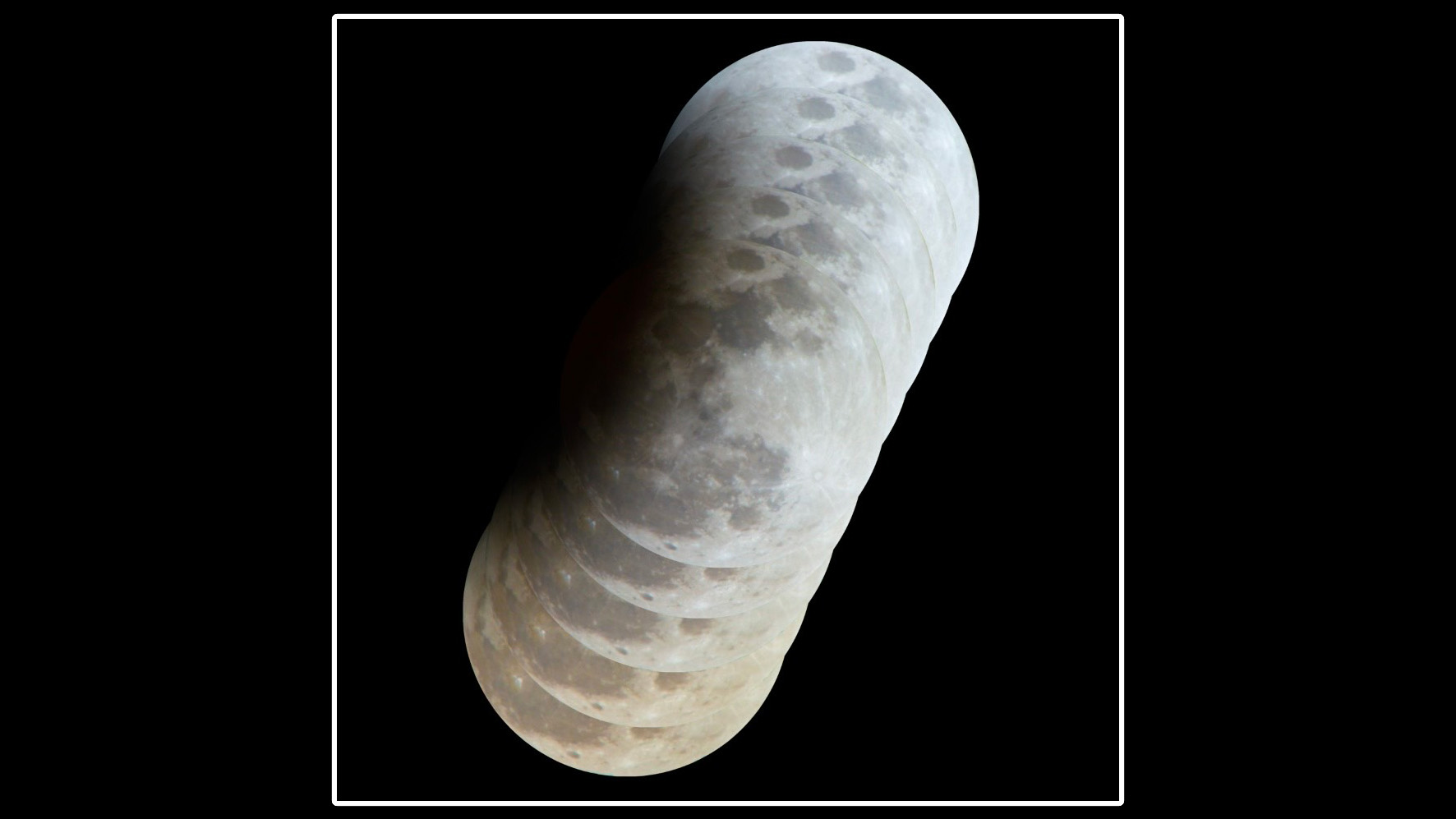
Celestial revelers were treated to the highlight of astrophotography in September this morning and last night, a partially eclipsed harvest supermoon. As such, the Internet and social media has been abuzz with out-of-this-world lunar photographs from the stellar event.
But I think this mesmerizing multiplicity from award-winning astrophotographer and all-around astro fanatic, Josh Dury (AKA Starman), is the cream of the celestial crop. The sequence was captured from the Mendip Hills Area of Outstanding Natural Beauty this morning from between 01:41 and 04:35, and comprises nine images – blended together in Adobe Photoshop – to showcase the Earth's shadow inching its way across the lunar surface.
Josh captured the sequence of images using his trusty Canon EOS 5D Mark III, Sigma 150-600mm F5-6.3 DG OS HSM | C, Sky-Watcher Star Adventurer star tracker platform and Benro Tortoise tripod.
But the best camera for astrophotography will only get you so far, so I sat down with Josh to pick up a few lunar tips and tricks. He revealed that the weather presented his biggest challenge. "I was talking to some fellow photographers and family when [the lunar event] was taking place, and there was cloud within a five-mile radius north and south. I strongly believe my location on the Mendip Hills acted as a miniature microclimate. From the images I have seen already, I have not seen a photograph yet capturing the eclipse from beginning to end. It just shows that with astrophotography, you really are at the mercy of the weather."
This is far from the first lunar eclipse Josh has photographed. He said: "Lunar eclipses vary in intensity from one eclipse to another. Previously, I have photographed total eclipses and even on this occasion, partial eclipses are just as fascinating to watch to document the celestial mechanics of our solar system taking place."
What makes Josh’s image so special is that it conveys the sequential movement of the eclipse in a still image. He said this was done to, "demonstrate the science of what is happening during a lunar eclipse. This is effectively an astronomical alignment between the sun, Earth and moon. The Earth's shadow is being projected onto the lunar disc. By capturing a series of images over a period of time, it is possible to show that progression which is what I wanted to achieve with this photograph."
Manual focus is an astrophotography staple. Josh told us: "Focusing on the moon isn't too difficult – typically you can focus on the edge of the lunar disc or notable features of interest to obtain a sharp image."







